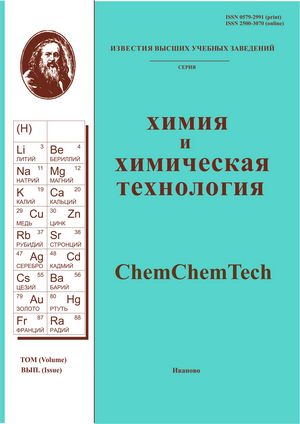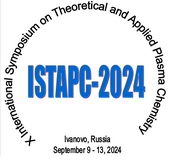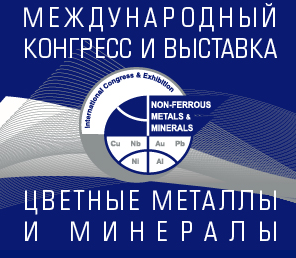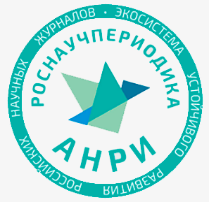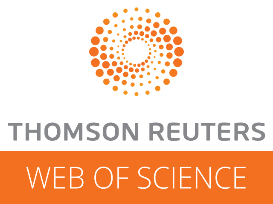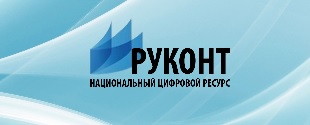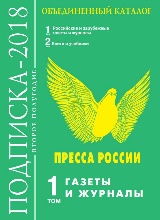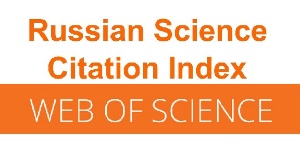ЭЛЕКТРОМЕМБРАННАЯ ОЧИСТКА СТОЧНЫХ ВОД ХИМИЧЕСКИХ ПРОИЗВОДСТВ ОТ ИОНОВ Cr6+, Zn2+, SO42-, Сl-
Аннотация
В работе получены данные по коэффициенту задержания, и величине удельного потока растворителя при нанофильтрационной и электронанофильтрационной очистке сточных вод гальванических производств от ионов Cr6+, Zn2+, SO42-, Сl-. Представлена интерпретация экспериментальных данных в зависимости от величины трансмембранного давления, фиксированного значения плотности тока и типа полупроницаемой мембраны. Установлено, что с повышением величины трансмембранного давления возрастает коэффициент задержания из-за уплотнения мембран, а при фиксированном значении плотности тока осуществляется избирательный перенос присутствующих в стоках катионов Zn2+ и анионов SO42-; Сl- преимущественно к прикатодным и прианодным мембранам ОПМН-П и АМН-П соответственно. Величина удельного потока растворителя с повышением давления увеличивается в диапазоне Р = (1,0 - 1,4) МПа, так как возрастает движущая сила процесса, и раствор разогревается при действии на систему разности электрических потенциалов, и незначительно снижается при Р = (1,4 - 1,6) МПа, из-за накапливания отложений на поверхности мембран при увеличенном потоке. В исследовании отмечается, что при электронанофильтрации раствор нагревается из-за того, что является проводником 2-го рода и в нем сосредоточено основное электрическое сопротивление, в отличие от металлических электродов (проводников 1 рода), изготовленных из платинированного титана. Различия удельного потока мембран ОПМН-П (1) и АМН-П (2) от рабочего давления при дополнительно наложенном электрическом потенциале связаны с материалом, из которого изготовлен их активный слой (полиамид, эфир целлюлозы соответственно), и различной их пористой структурой, распределением пор по поверхности, формой и ориентацией
Для цитирования:
Лазарев С.И., Ковалева О.А., Попов Р.В., Ковалев С.В., Игнатов Н.Н. Электромембранная очистка сточных вод химических производств от ионов Cr6+, Zn2+, SO42-, Сl-. Изв. вузов. Химия и хим. технология. 2018. Т. 61. Вып. 4-5. С. 119-125
Литература
Manawi Y., Kochkodan V., Hussein M.A. Can carbonbased nanomaterials revolutionize membrane fabrication for water treat-ment and desalination? Desalination. 2016. V. 391. P. 69-88.
Daer S., Kharraz J., Giwa A. Recent applications of nanomaterials in water desalination: A critical review and future opportuni-ties. Desalination. 2015. V. 367. P. 37-48.
Wenten I.G., Khoiruddin. Reverse osmosis applications: Prospect and challenges. Desalination. 2016. V. 391. P. 112-125.
Belaissaoui B., Claveria-Baro J., Lorenzo-Hernando A. Potentialities of a dense skin hollow fiber membrane contactor for biogas purification by pressurized water absorption. J. Membr. Sci. 2016. V. 513. P. 236-249.
Thakur V.K., Voicu S.I. Recent advances in cellulose and chitosan based membranes for water purification: A concise review. Carbohydrate Polymers. 2016. V. 146. P. 148-165.
Zhang F., Gao S., Zhu Y., Jin. J. Alkaline-induced superhydrophilic/underwater superoleophobic polyacrylonitrile membranes with ultralow oil-adhesion for high-efficient oil/water separation. J. Membr. Sci. 2016. V. 513. P. 67-73.
Liu J., Yuan J., Ji Z. Concentrating brine from seawater desalination process by nanofiltration–electrodialysis integrated mem-brane technology. Desalination. 2016. V. 390. P. 53-61.
Yan F., Chen H., Yang L., et al. Improving the water permeability and antifouling property of thin-film composite polyamide nanofiltration membrane by modifying the active layer with triethanolamine. J. Membr. Sci. 2016. V. 513.
P. 108-116.
Shaffer D.L., Yip N.Y., Gilron J., Elimelech M. Seawater desalination for agriculture by integrated forward and reverse osmo-sis: improved product water quality for potentially less energy. J. Membr. Sci. 2012. V. 415-416. P. 1-8.
Martinetti C.R., Childress A.E., Cath T.Y. High recovery of concentrated RO brines using forward osmosis and membrane distillation. J. Membr. Sci. 2009. V. 331. I. 1-2. P. 31-39.
Lazarev S.I., Kovalev S.V., Kazakov V.G. Studies of the kinetic and structural characteristics of the electrobaric membrane cleaning of washing water of 2,2'-dibenzothiazolyl disulphide production. Izv. Vyssh. Uchebn. Zaved. Khim. Khim. Tekhnol. 2016. V. 59. N 2. P. 34-40 (in Russian).
Svittsov A.A. Introduction to membrane technology. M.: DeLi print. 2007. 208 р. (in Russian).
PND F 14.1:2.107-97. Quantitative chemical analysis of waters. Method for performing measurements of mass concentrations of sulfates in samples of natural and purified sewage by titration with a barium salt in the presence of ortanil K. M.: (Izdanie 2012 y.). 18 р. (in Russian).
PND F 14.1:2.96-97 Quantitative chemical analysis of waters. Method for performing measurements of the mass concentration of chlorides in samples of natural and treated wastewater using an argentometric method. M.: (Izdanie 2011 y.). 19 p. (in Russian).
PND F 14.1:2.195-2003 Quantitative chemical analysis of waters. Method for performing measurements of the mass concentration of zinc ions in natural and waste waters by photometric method with sulfarsazene. Moskva. (Izdanie 2012). 16 p. (in Russian).
PND F 14.1:2:4.52-96 Quantitative chemical analysis of waters. Method for measuring the mass concentration of chromium ions in drinking, surface and waste waters by photometric method with diphenylcarbazide. M.: (Izdanie 2011). 20 р. (in Russian).
Kovaleva O.A, Lazarev S.I., Kovalev S.V., Popov R.V. Practical application of baromembrane and electrobaromembrane meth-ods of separation of technological solutions of chemical industries. All-Russia Sci.-Pract. Conf. with Int. Participarion. Voronezh: VGUIT. 2016. P. 121-124 (in Russian).
Ryabchikov B.E. Modern methods of preparing water for industrial and domestic use. M.: Deli print. 2004. 328 p. (in Russian).
Darestani M.T., Chilcott T.C., Coster H.G.L. Changing the microstructure of membranes using an intense electric field: filtra-tion performance. J. Membr. Sci. 2014. V. 449. Issue 1. P. 158–168.
Darestani M.T., Chilcott T.C., Coster H.G.L. Changing the microstructure of membranes using intense electric fields: dielectric strength studies. J. Membr. Sci. 2014. V. 452. Issue 2. P. 367–378.

